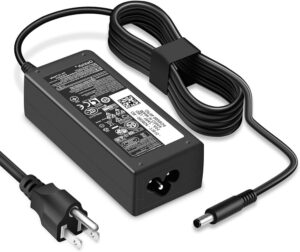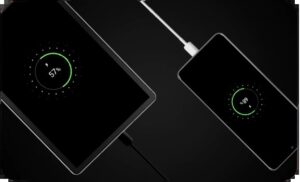Curious about how much power your phone charger consumes? Well, it’s a common concern for many of us. The good news is, you’ve come to the right place! In this article, we will explore just how much power your phone charger actually uses, providing you with a clear understanding of its energy consumption. Understanding the power usage of your phone charger is not only beneficial for your wallet but also for the environment. So let’s dive in and uncover the truth behind the energy consumption of your trusty phone charger.
How Much Power Does a Phone Charger Use?
Have you ever wondered how much power your phone charger consumes? In a world where we rely heavily on mobile devices, understanding the power consumption of phone chargers is important for both energy efficiency and cost savings. In this article, we will delve into the details of phone charger power usage, exploring various factors that determine how much power they consume.
Understanding Power Consumption
Before we dive into the specifics of phone charger power usage, let’s first understand the concept of power consumption. Power consumption refers to the amount of electrical energy consumed by an electronic device, such as a phone charger, over a given period of time. It is typically measured in watts (W).
What is a Phone Charger?
A phone charger, also known as an AC adapter or power adapter, is a device that connects to an electrical outlet to provide power to charge a mobile phone or other electronic devices. It consists of two main components: a transformer and a rectifier.
The transformer converts the high voltage AC (alternating current) from the electrical outlet to a lower voltage AC suitable for charging the phone. The rectifier then converts the AC to DC (direct current) to power the phone’s battery.
Factors Affecting Phone Charger Power Consumption
The power consumption of a phone charger can vary depending on several factors. Let’s explore each of these factors in more detail:
Charger Type and Efficiency
The type and efficiency of the charger play a significant role in determining its power consumption. There are primarily two types of phone chargers: linear chargers and switched-mode chargers.
Linear chargers are relatively less efficient as they dissipate excess energy as heat. On the other hand, switched-mode chargers are more efficient as they use electronic components to convert and regulate the power more effectively.
Charging Capacity
The charging capacity of a phone charger also impacts its power consumption. Different chargers have different charging capacities, expressed in terms of amperage (A) or milliampere (mA). A higher charging capacity allows the charger to deliver more power to the device, reducing the charging time. However, higher charging capacities also tend to consume more power.
Phone Battery Capacity
The capacity of the phone’s battery plays a role in determining the power consumption of the charger. A larger battery capacity requires more power to charge fully, leading to increased power consumption by the charger.
Charging Speed
The charging speed, often referred to as fast charging or quick charging, can affect the power consumption of a phone charger. Fast charging technologies, such as Qualcomm’s Quick Charge or USB Power Delivery (PD), allow devices to charge at a higher wattage, resulting in faster charging times. However, faster charging speeds also mean higher power consumption.
Idle Power Consumption
Even when not actively charging a device, a phone charger may still consume a small amount of power. This idle power consumption is often attributed to standby power used by the charger’s internal circuitry. While the power consumed in idle mode is typically minimal, it can add up if chargers are left plugged in for extended periods.
Calculating Phone Charger Power Consumption
Now that we understand the various factors that affect phone charger power consumption, let’s explore how to calculate it.
The power consumption of a phone charger can be calculated using the following formula:
Power Consumption (in watts) = Charging Voltage (in volts) × Charging Current (in amperes)
For example, if a phone charger has a charging voltage of 5V and a charging current of 2A, the power consumption would be:
Power Consumption = 5V × 2A = 10W
It’s important to note that this calculation represents the maximum power consumption of the charger under full load conditions. In reality, the power consumption may vary due to factors like charger efficiency and the charging state of the phone’s battery.
Reducing Phone Charger Power Consumption
While phone charger power consumption is inevitable, there are ways to reduce it for energy efficiency and cost savings. Here are some tips to minimize power consumption:
- Choose an energy-efficient charger with a higher efficiency rating.
- Opt for chargers with optimized charging technologies, like USB Power Delivery, that deliver power more efficiently.
- Avoid leaving chargers plugged in when not in use to minimize idle power consumption.
- Consider using smart plugs or power strips with energy monitoring features to track and control charger power consumption.
- Use chargers with lower charging capacities when fast charging is not necessary to reduce power consumption.
By implementing these practices, you can not only minimize your environmental impact but also save on your electricity bill.
Understanding the power consumption of phone chargers is crucial in today’s digital era. By considering factors such as charger type, charging capacity, battery capacity, charging speed, and idle power consumption, you can make informed decisions to reduce power consumption and promote energy efficiency.
Remember, opting for energy-efficient chargers, being mindful of idle power consumption, and adopting technologies like USB Power Delivery can help you strike a balance between charging convenience and environmental responsibility. So, make wise choices and keep your devices powered up without excessive energy consumption.
By being conscious of phone charger power consumption, you can contribute to a greener future while staying connected to the digital world.
I hope this article has provided you with valuable insights into the power consumption of phone chargers. If you have any further questions, please refer to the FAQ section below.
Can you use ANY phone charger to charge your phone?
Frequently Asked Questions
How much power does a phone charger use?
A phone charger typically uses around 5 to 10 watts of power, depending on the specific model and charging speed.
Does the power consumption of a phone charger vary based on the phone model?
No, the power consumption of a phone charger does not vary based on the phone model. The charger provides a certain amount of power, and the phone draws only as much power as it needs.
Can using a high-power charger damage my phone?
No, using a high-power charger will not damage your phone. The phone will only draw the amount of power it requires for charging, regardless of the charger’s maximum output.
Does charging a phone overnight consume more power?
Charging a phone overnight does consume additional power, but modern smartphones are designed to stop charging once the battery reaches 100%. This helps prevent overcharging and minimizes excessive power consumption.
Are USB chargers more energy-efficient than wall chargers?
USB chargers and wall chargers have similar energy efficiency levels. The difference lies in their design and portability. USB chargers are typically smaller and more convenient for charging on the go, while wall chargers often provide faster charging speeds.
Final Thoughts
Phone chargers are an essential part of our daily lives, enabling us to keep our devices powered up and connected. But have you ever wondered how much power these chargers actually use? The power consumption of a phone charger can vary depending on several factors, such as the charger’s wattage and the device being charged. On average, a phone charger typically uses around 2 to 10 watts of power. However, it’s important to note that the actual power consumption may be even lower when the device is fully charged or in standby mode. So, the next time you plug in your phone charger, you can have a better understanding of how much power it utilizes.




